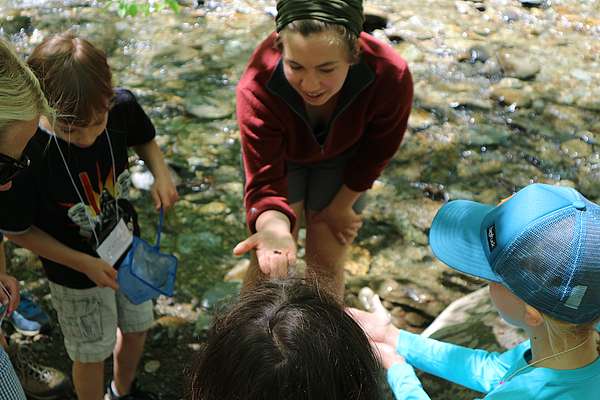Why Community Conservation?
According to the Land Trust Alliance, Community conservation is an approach to land conservation that includes more people and responds to a community need. It connects people with place. And connects people with people. By creating opportunities for more people to get involved, it energizes our community and broadens the reach of organizations like Stowe Land Trust (SLT). Around the country, land trusts like ours are using community conservation to save more land and change lives in new ways by partnering with schools, working with veterans, inspiring youth to develop leadership skills and explore careers in conservation, engaging elders, addressing food and hunger through creating community gardens, and more. This work inspires us at SLT to continue to learn and evolve so that we can do our best work to serve the Stowe area community. Now and always.
Deciding where we are & where we want to go
In 2019, SLT joined several other land trusts in the northeast in participating in a Community Conservation Assessment pilot project sponsored by the Land Trust Alliance. Our goals were to (1) create space to reflect on our community conservation work to date, (2) learn from other land trusts and best practices in the field, (3) identify our strengths, areas for growth, and new opportunities to engage with and serve our community, (4) advance specific objectives and strategies in our current 3-year strategic plan; and (5) create a prioritized roadmap for action.
We worked over the following year with consultants, Claire Wheeler and Karena Mahung, who led us through an internal and external review. Stowe Land Trust board and staff used the consultants’ final report and recommendations and the results from a 2020 community wide SLT survey to create a roadmap for action, which includes the following immediate 2021 priorities. The roadmap was adopted by the SLT board in May 2021 and includes longer-term priorities that will be considered during our next 3-year organizational strategic plan update in 2022.
It is our hope that this roadmap keeps us on the path to securing all the benefits that protecting, caring for, and connecting to land can provide for everyone in our community and the next generation.
2021 Priorities
Create and share an explicit statement of core values, commitments, and the journey we are on to become a more diverse, equitable and inclusive organization.
Continue engaging new partners and groups via Summer Naturalist programs.
Emphasize and expand free educational programming and public outings. Make participation more accessible.
Be present at community and partner events.
Continue supporting traditional land uses such as hunting and fishing.
Continue to highlight intersections between diversity, equity and inclusion (DEI) and land conservation at events and in communications.
Work with partners to research and share different stories of people and land, particularly those from marginalized communities (e.g. Abenaki and farmers of color)
Provide at least baseline training in DEI for board and staff. Plan for additional organization development work over next three years.
Pursue opportunities for board meeting special guests and topics related to DEI & conservation.
Curate internal list of DEI resources related to land and conservation. Encourage board and staff learning.
Revisit board of directors recruitment matrix to ensure DEI best practices.
Continue stewardship projects on conserved lands such as riparian plantings, invasive plant control and trail work that maximize opportunities to build relationships with partners, volunteers and youth.
Inventory and assess accessibility of conserved lands and trailheads. Identify opportunities for improvement.
Learn more from other land trusts about opportunities to apply an equity framework to strategic land protection criteria. Explore new potential partnerships including with Every Town Project and indigenous communities.
Continue conversations with partners about dual goal project opportunities, such as those that could include affordable housing.
Complete update to SLT brand.
Develop a value proposition based on a broader audience (e.g., nature as basic need).
Update membership strategy. Better define target audiences and strategies for how SLT will engage them in membership and other actions.
Upgrade SLT website to make more accessible and mobile-friendly.
Increase capacity in areas of outreach, education, community engagement and fundraising. Hire a Community Engagement Manager.
